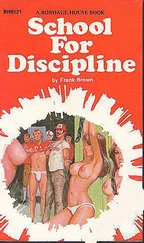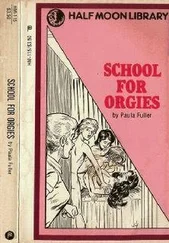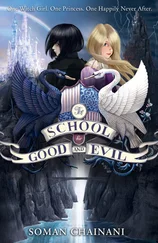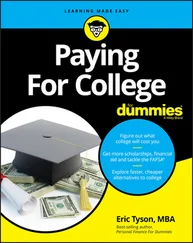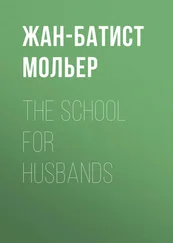Since all instruction is Nazi instruction, all science is Nazi science. Physics is Nazi physics, Wehrphysik — the “physics of weapons.” Professor Lenard, a Nobel Prize winner, an old Heidelberg scholar, and one of the few of whose achievements the Nazis may be proud, has written a new German Physics, dedicated to Dr. Frick, Prussian Minister of the Interior, and opening: “German Physics? These words will raise a question, and it is true that I might as well have said Aryan physics — or the physics of the Nordic man, or the physics of those who have fathomed the depths of reality. ‘But,’ I shall hear, ‘science is and remains international.’ That is an error. Science is and remains, like everything else created by the human mind, racially bound and a result of blood.”
There it is, with the familiar ring, leaving no doubts as to the success of their totalitarian co-ordination, the Gleichschaltung they all profess.
“The physics of weapons will naturally play an important part in the education of German Youth to bear arms,” says Oberstudiendirektor Erich Günther, in the preface to his textbook on Wehrphysik. The transformation of physics into the teaching of National Socialism has the purpose “of awakening not only the ability to bear arms but the will to do so, and beyond that, to show the ways and technical means to carry out the decision to bear arms.” In the first chapter, “to see, to measure distances, and to carry into execution,” are all physical laws, having to do with the gauging of distance, sighting the line of fire, and calculating military aims. An example: “A coast artillery gun is firing at a ship steaming at a speed of thirty knots diagonally toward the point where the cannon is. How great is the approach? The average speed of the projectile is to be assumed as 600 meters per second.”
It continues: “Sound and the measurement of sound” are treated in their relation to aerial defense. “Weather” and “Pioneer Mechanics” each include a section about war, and transmission techniques are tested for usefulness in case of war.
A ministerial edict of February 17, 1934, made it obligatory for all schools “further to accustom the young to the idea of aerial maneuvers,” and has had great influence on the teaching of physics. To supplement the regular textbooks, two copy-books by Professor K. Schütt have appeared. One is entitled Elements of Aeronautics, and the other Aeronautics in the Period for New German Language. The study, indeed, plays a highly important part in almost every subject: instruction in mathematics is almost entirely given over to “Aeronautics” in the higher classes — that is, when it is not superseded by statistical studies in the interest of racial education or of Nazi colonial ambitions.
“What is really important,” says Dr. Rudolf Krieger in the April, 1937, N.S. Bildungswesen, after a statement about weapons, “is that the educator must, objectively, through stories having to do with weapons, and articles written about weapons, treat of the National Socialist point of view and make this attractive to his pupils with historical or contemporary facts which will open his (the pupil’s) eyes to such questions and form his opinion in a healthy attitude toward the politics of weapons.”
All the sciences offer opportunities to the teacher who desires to make “the science of weapons” attractive to his pupils. School Experiments in the Chemistry of Fighting Materials — A Book of Experiments in Protection against Poison Gas and Air Raids, “informs youth as to the use of, and defense against, chemical warfare.” Its author, Dr. Walter Kintoff, explains in great detail that the defense of the country, in case of war, would have to be taken over by those between fifteen and eighteen, not yet old enough to bear arms. It is therefore essential to teach these children the problems of defense. Nothing could be more important for this than instruction in the practical side of chemical warfare. The Doctor regrets that this careful instruction is not entirely without difficulties, since the “creation of one or another situation in the lessons is bound to meet with this or that conflict not entirely free from danger.” Nevertheless he sets, in his first chapter, experiments with “incendiary materials,” such as the thermite (igniter) used to fill explosive bombs. And he reflects: “Fire has a double mission in matters pertaining to war: on the one hand, it is supposed to cause considerable damage, and, on the other, to wear the population out morally, that is, to break its power of resistance…. It is modem chemistry which puts arson on a new footing.”
Other chapters deal with “Gas Weapons”: “Eye Irritants,” “Lung Poisons,” or “Choking Weapons” (green cross), “Skin Poisons” (yellow cross), and “Nose and Throat Irritants” (blue cross).
Laboratories all over Germany, filled with school-children, playing cheerfully with death and suffering!
Endless repetition, for the Nazis repeat endlessly in their drive to one goal, shouting their slogans with all the inflections, teaching their mottoes in every class. Even the lesson in drawing, which used to be the gayest and most relaxed hour — what has happened to it?
Any issue of Art and Youth offers a lively picture of a Nazi drawing lesson. The May, 1937, issue begins with a “Family Tree of Instructors,” and a “Pedigree of Residences”!). The leading editorial is a long illustrated essay entitled Aerial Defense in the Drawing Class. Joseph Stuchler says: “The first thing we must demand of a task is its value in terms of national preparedness. It is characteristic of our epoch that the defense instincts ( Wehrhaftsinne ) of our youth are stimulated through the awakening of its will to bear weapons. In this sense, lessons of aerial defense in the drawing class meet with our educational objective!”
He goes on to describe classes in grammar school, keeping to his theme of “Aerial Defense.” He begins with the sixth grade (the German schools have nine classes, numbered Nine to One), and here he is referring to children of ten:
“Everything that moves, that is unusual, may be the object of portrayal. Thus, for example, an air-raid, the activity of weapons of defense, the searchlight, parachute jumping, explosions, burning houses, the fire department in action, helping the medical officers, the strange appearance of men in gas masks, to which, of course, we add the element of color. All this belongs to the life and experience of a ten-year-old boy. Motionless forms, such as, for example, the houses of a city, are no more than meaningless scenery, and as such can often be omitted altogether.”
For the fifth grade, more ambitious tasks!
“We proceed in our study of movement, and we portray the act of ‘falling out,’ with both arms stretched upward… also, we can depict the act of ‘falling backward unconscious,’ with the marked declivity of the whole body and of the arms in a backward motion: that is easy to reproduce. And now we observe the medical officers at work. The simple walk of the doctors and their aides as they transport a wounded man on his stretcher, as well as the simple pose of kneeling, ought not to be too difficult even for those pupils less gifted in drawing.”
The fourth grade is to draw a bomb-proof cellar; but to stress the dramatic impact of a bomb hitting near the cellar rather than the passive distress of the people huddled inside. “In this manner the teacher can awaken the imagination dormant in the child and make use of it in a manner helpful to our theme.”
Читать дальше


